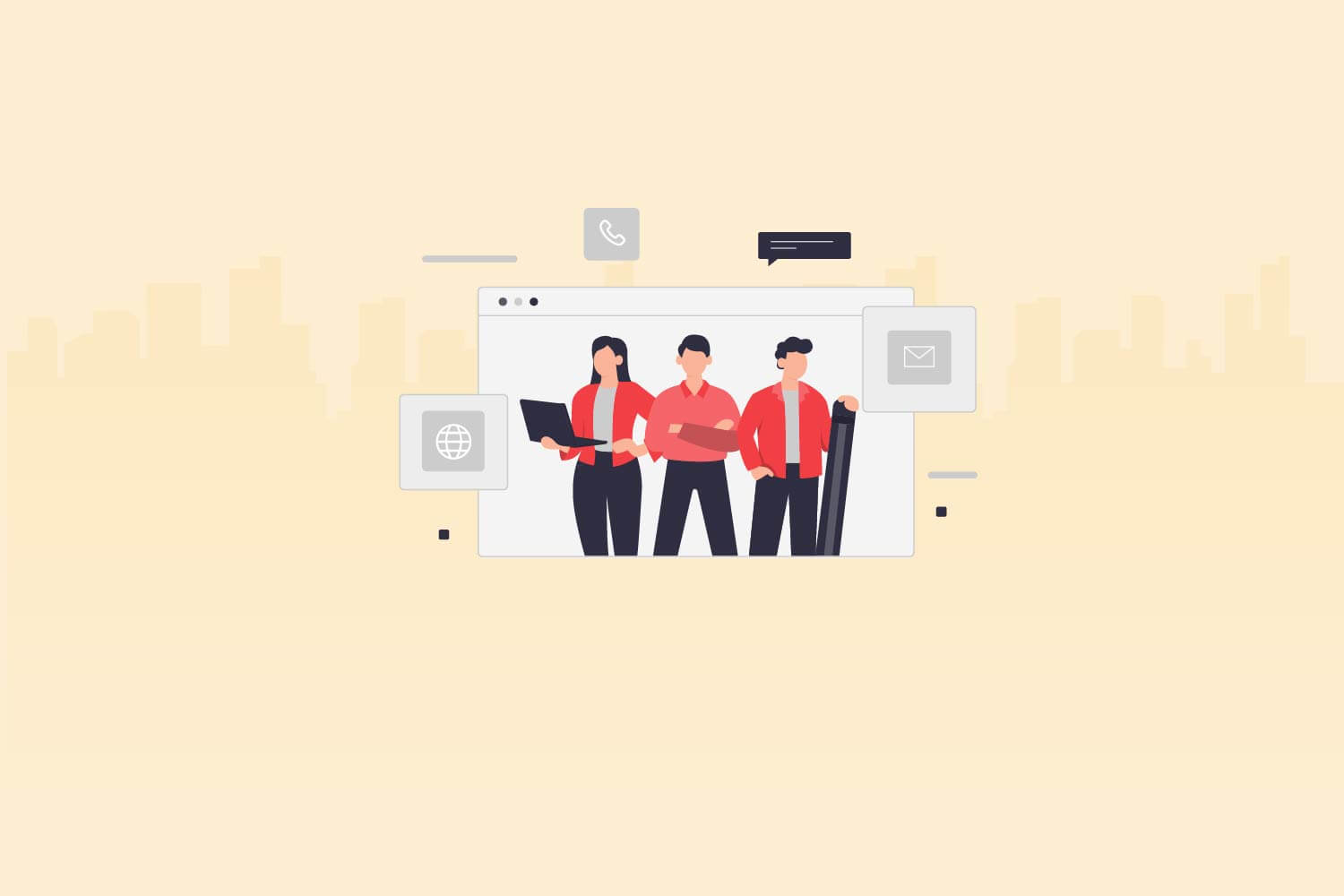In a world characterized by diversity and interconnectedness, building a workforce that reflects and embraces this reality is no longer an option; it’s an imperative. The quest for a diverse and inclusive workforce has evolved from being a corporate buzzword to a strategic necessity, one that not only aligns with ethical values but also drives tangible benefits for organizations.
Recent research published in the Journal of Diversity Management indicates that organizations fostering diversity and inclusion experience a 33% increase in employee performance and 42% higher team collaboration.
This blog delves into the multifaceted journey of creating a diverse and inclusive workforce, exploring the essential strategies and practices that organizations can employ to foster an environment where every individual can thrive.
Understanding diversity and inclusion
In today’s rapidly evolving world, the concept of diversity and inclusion has gained immense significance in the workplace. Diversity refers to the range of differences among individuals, encompassing factors such as race, ethnicity, gender, age, sexual orientation, physical abilities, and more. Inclusion, on the other hand, focuses on creating an environment where every employee feels respected, valued, and empowered, regardless of their background or characteristics. The synergy between diversity and inclusion is what cultivates a rich and vibrant organizational culture.
Understanding the true essence of diversity and inclusion is crucial for organizations aiming to thrive in a globalized marketplace. Embracing diversity not only reflects the diverse customer base most businesses serve but also fosters creativity, innovation, and adaptability within the workforce. Inclusion complements diversity by ensuring that all voices are heard and contributions are recognized, leading to higher employee engagement and retention.
As we delve deeper into the nuances of building a diverse and inclusive workforce, it’s essential to recognize that this isn’t merely a checkbox exercise; it’s a transformative journey that demands a commitment to change at all levels of the organization. By embracing diversity and fostering inclusion, companies stand to unlock their full potential and drive sustainable success.
Creating an inclusive recruitment strategy

Crafting an inclusive recruitment strategy is the cornerstone of building a diverse workforce. Traditional recruitment methods often inadvertently perpetuate biases and limit the candidate pool. To counter this, organizations must proactively seek out strategies that broaden their reach and eliminate unconscious biases.
One pivotal step is to identify and rectify biases within recruitment processes. This can involve conducting comprehensive training sessions for hiring teams to recognize and counteract their unconscious biases. Additionally, revising job descriptions and requirements to focus on skills rather than unnecessary qualifications can attract a wider array of candidates.
Expanding the candidate pool to encompass underrepresented groups is paramount. Collaborating with diverse networks, attending job fairs targeting minority communities, and building relationships with educational institutions can yield a more diverse applicant base. Digital platforms and social media can also be leveraged to reach a broader audience.
An inclusive recruitment strategy doesn’t only focus on the pre-hire stage but also on ensuring fair and unbiased interview processes. Implementing structured interviews and diverse interview panels can mitigate biases and ensure a level playing field for all candidates.
By laying the foundation with an inclusive recruitment strategy, organizations set the stage for a workforce that mirrors the world’s rich tapestry and brings varied perspectives to the table.
Fostering an inclusive company culture
Cultivating an inclusive company culture is an essential commitment for organizations dedicated to diversity. An inclusive culture goes beyond policies; it’s a reflection of shared values, attitudes, and behaviors that make every employee feel welcomed and valued.
At the heart of this endeavor is the development and communication of a clear diversity and inclusion policy. This policy should outline the organization’s stance on diversity, its commitment to fostering an inclusive environment, and the steps it will take to achieve these goals. By laying out expectations from the top, organizations can create a roadmap for all employees to follow.
Training programs play a pivotal role in transforming policy into practice. Sensitivity training, unconscious bias workshops, and inclusive behavior seminars can raise awareness about the subtle challenges faced by underrepresented groups and encourage empathy and understanding. These programs should be continuous to reinforce the message and ensure that diversity and inclusion remain at the forefront of employees’ minds.
Employee Resource Groups (ERGs) offer a valuable platform for fostering inclusion. These groups, formed around shared characteristics or experiences, provide a safe space for employees to connect, share insights, and contribute to organizational change. ERGs can also serve as a bridge between employees and leadership, promoting open dialogue and collaborative problem-solving.
Promoting equal opportunities and growth
Promoting equal opportunities and growth is a cornerstone of creating a truly inclusive workforce. This commitment involves ensuring that all employees have an equitable chance to excel, irrespective of their background or identity.
Achieving pay equity is a fundamental step in this direction. It requires a comprehensive review of compensation structures to identify and rectify any gender or race-based disparities. Transparent salary scales and regular audits can help maintain fairness over time.
Mentorship and sponsorship programs are powerful tools for nurturing talent from underrepresented groups. Pairing junior employees with experienced mentors can provide guidance, encouragement, and valuable insights, while sponsorship involves advocating for an employee’s advancement within the organization.
Creating paths for advancement is equally crucial. Leadership opportunities should be accessible to everyone based on their skills and contributions rather than their identity. Implementing inclusive succession planning ensures that a diverse range of candidates are considered for leadership roles.
To support equal growth, organizations should provide professional development resources that cater to different learning styles and needs. Tailored training, workshops, and skill-building programs can help employees from all backgrounds thrive in their roles and contribute meaningfully.
Addressing microaggressions and unconscious bias
Addressing microaggressions and unconscious bias is pivotal in fostering a truly inclusive workplace. Microaggressions, subtle and often unintentional acts that marginalize individuals, can undermine even the best diversity efforts. Unconscious biases, ingrained stereotypes affecting decision-making, also need to be acknowledged and mitigated.
Recognizing and addressing microaggressions starts with education. Regular workshops and training sessions can raise awareness about these behaviors and their impact. Creating a safe space for open discussions enables employees to share their experiences and learn from one another.
Unconscious bias training is a proactive measure to counter the impact of implicit stereotypes. These programs offer insights into the science behind biases and provide practical strategies to minimize their influence in day-to-day operations, such as hiring, promotions, and project assignments.
Open communication channels for reporting and resolving issues are essential. Employees should feel comfortable speaking up about instances of bias or microaggressions. Establishing a formal reporting process and ensuring that these reports are treated confidentially and seriously reinforces the commitment to an inclusive environment.
By actively addressing microaggressions and unconscious bias, organizations signal their dedication to creating a workplace where every individual can contribute their best without fear of discrimination. This not only strengthens the workforce but also sets a positive example for others to follow.
Measuring and adapting diverse and inclusive initiatives

Measuring and adapting diversity and inclusion initiatives is crucial for sustained progress. A commitment to ongoing evaluation ensures that efforts remain effective, relevant, and aligned with organizational goals.
Establishing key performance indicators (KPIs) is the first step. These quantifiable metrics could include diversity in hiring, representation in leadership positions, and employee satisfaction scores related to inclusion. Setting clear KPIs provides a benchmark to track progress over time.
Regular audits and assessments of diversity metrics provide insights into the success of initiatives. These evaluations can identify areas of improvement and areas where change is needed. For instance, if certain teams lack diversity, adjustments can be made to recruitment strategies or team dynamics.
Feedback and data collection are essential for continuous improvement. Regular surveys and focus groups allow employees to voice their opinions and experiences. This feedback informs adjustments to policies, training programs, and overall strategies to better meet employee needs.
Flexibility is key; strategies should be adaptable to changes in the workforce and societal shifts. As organizations grow and evolve, so should their diversity and inclusion initiatives. Regularly reviewing and updating these strategies keeps them in tune with the evolving needs of the workforce and the broader community.
Conclusion
The journey to build a diverse and inclusive workforce is one that requires steadfast dedication, unwavering commitment, and continuous effort. As this blog has illuminated, diversity and inclusion extend far beyond the realm of HR policies; they permeate every facet of an organization, from its recruitment strategies to its leadership practices, and from its everyday interactions to its long-term goals.
In creating a diverse and inclusive workforce, organizations have the power to not only reshape their internal dynamics but also influence broader societal norms. By recognizing the importance of diversity, embracing inclusion, and integrating these values into the core of their operations, companies can foster environments where creativity flourishes, innovation thrives, and employees feel a profound sense of belonging.
The journey is ongoing, marked by milestones and challenges alike. Yet, with each step forward, organizations take strides towards a more equitable future, where diversity is celebrated, inclusion is practiced, and the collective strength of a diverse workforce propels them to unprecedented heights. As we conclude this exploration, let’s remember that building a diverse and inclusive workforce is not just a business strategy; it’s a reflection of the shared humanity that unites us all.
Testlify offers a range of assessments and challenges that allow you to gauge candidates’ knowledge, problem-solving skills, and creativity in real-world scenarios. With our extensive test library, you can objectively evaluate candidates’ abilities, ensuring you shortlist the most talented individuals efficiently. Ready to unlock the potential of your hiring process with our talent assessment tool? Book a free 30-minute live demo with Testlify. Our expert team will guide you through the platform, showcasing relevant skill tests tailored to your organization’s needs. With our support, you can streamline candidate selection, saving valuable time and resources.








